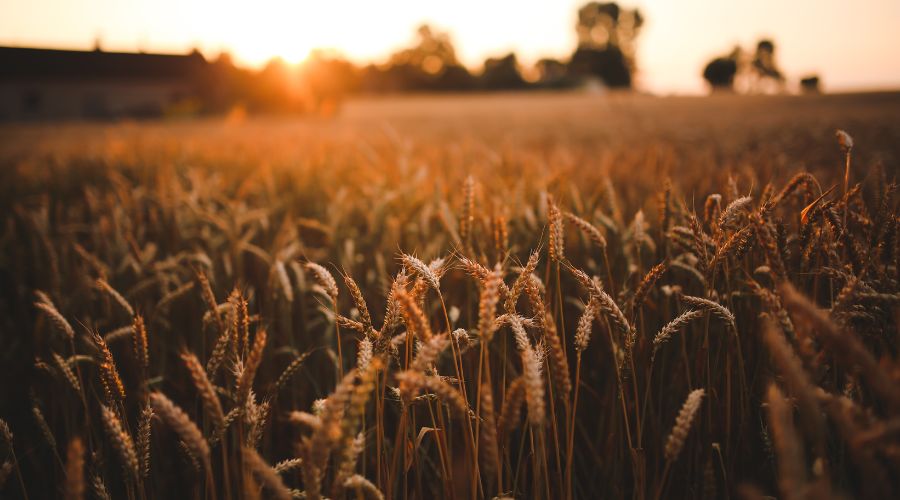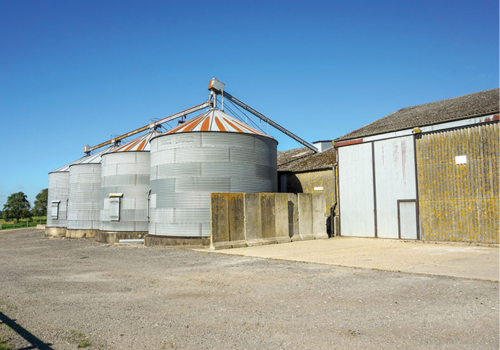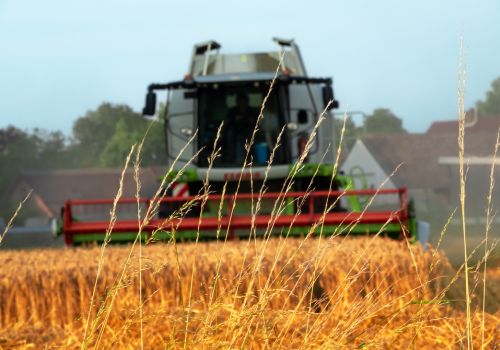Handling grain – 8 hazards and dangers to consider
31st August 2023
The farming industry carries many risks. Some are obvious, such as dealing with heavy or sharp apparatus, working at height or even angry livestock, and others less so, such as handling grain.

With the harvesting season upon us, now is the perfect time to examine the risks of processing and storing grain.
Machinery has revolutionised farming by increasing production and reducing the number of hands needed. It has also created some of the highest risks of injury and/or death. The farming industry has a high rate of workplace accidents, so health and safety should be at the front of everyone’s mind.
With the harvesting season upon us, now is the perfect time to examine one of the lesser-known risks – processing and storing grain. Here are some of the main risks to be considered when working with grain.
Confined spaces – grain silos
Grain silos are dangerous due to the high risk of engulfment, a lack of breathable air, and the mechanical hazards of sweep augers. If possible, you must avoid entering these spaces. If the hazard is unavoidable e.g. for essential maintenance, a detailed risk assessment and Permit to Work are necessary to anticipate the many risks a worker would face.
A rescue plan should be outlined and rehearsed ahead of emergencies occurring to prevent rescuers from being overcome.
Grain goes through a vigorous process before it is ready for distribution, including ensuring the temperature is kept constant to dry the grain out. Climbing up onto the silo to check grain temperature carries high risk and even a small mistake could prove fatal.
Although the grain may seem solid, anyone stepping onto it risks being engulfed as the grain cannot support an average person’s weight. People have also slipped and fallen to their death while checking grain temperature. These incidents, although rare, have a high fatality rate. The suction-like action and weight prevents victims from resurfacing and makes rescue incredibly difficult.

Before inspecting grain silos, a rescue plan should be outlined and rehearsed.
Falls from height/slips and trips
Ladders and stair access to equipment present a high injury risk – falls from height are the most common type of fatal injury at work with 40 deaths in 2022. Added to this are slip/trip risks from obstructions and uneven floors.
Good housekeeping and regular maintenance of access equipment plus staff training on working at height safely reduce the risks considerably.
Harvest machinery
Machinery, such as screw conveyors, rotary valves, roller mills and mixers, can all cause serious injury if operators don’t follow all health and safety procedures.
Hazards with machinery usually occur during maintenance, cleaning or when refilling the silos. A detailed risk assessment must be carried out to identify risks and controls before anyone operates any machinery. These should be regularly revisited and updated. We recommend annual risk assessments as a minimum to ensure any damage is identified and additional controls are put in place where needed.

All machinery during harvest season can pose a danger to you and all others on your farm.
Transporting grain
Lift trucks and trailers when moving around site or tipping grain present high risks to pedestrians. A site-specific traffic management plan including vehicle/pedestrian separation and sufficient banksmen on site will control significant risks.
Manual sack handling
Heavy sacks should be mechanically lifted/handled wherever possible with manual handling kept to a minimum.
Noise-induced hearing loss (NIHL)
Noisy machinery and equipment can cause temporary or permanent hearing loss for workers. Aim to reduce exposure to as low as reasonably practicable by reducing shift lengths and modifying the plant, machinery, and working environment. Ear protectors are a last resort as the least effective measure.

Are protectors are the least effective measure to reduce hearing loss.
Hazardous substances
Commonly used chemicals such as chlorine, hydrochloric acid, and sulphur dioxide can harm workers. Tight controls and high awareness of how to handle, store and dispose of hazardous substances is essential.
Bottles require clear labelling with the relevant icons identifying the danger, i.e. ‘corrosive’ or ‘flammable’. This is a legal requirement.
Grain dust
Exposure to excess grain and flour dust can cause occupational asthma. This is a big one. 33% of all food industry compensation cases are to do with asthma contracted as a result of working with flour and grain dust. If not properly controlled, milling and other manufacturing processes can generate a lot of airborne dust. This is easily inhaled by workers, who are then vulnerable to asthma, rhinitis (runny/stuffy nose), conjunctivitis (watery or prickly eyes) and other irritant effects.
Good ventilation at source will prevent excess generation of dust.
Regular monitoring of dust levels is vital, as is maintenance of associated machinery and equipment. Health surveillance should be put in place for all workers exposed to dust hazards.
Plenty to think about
If you have made it this far, you’ll know that there are dangers in every part of the harvesting process. Make sure that the handling of grain is at the top of your priority list during this harvest season.
